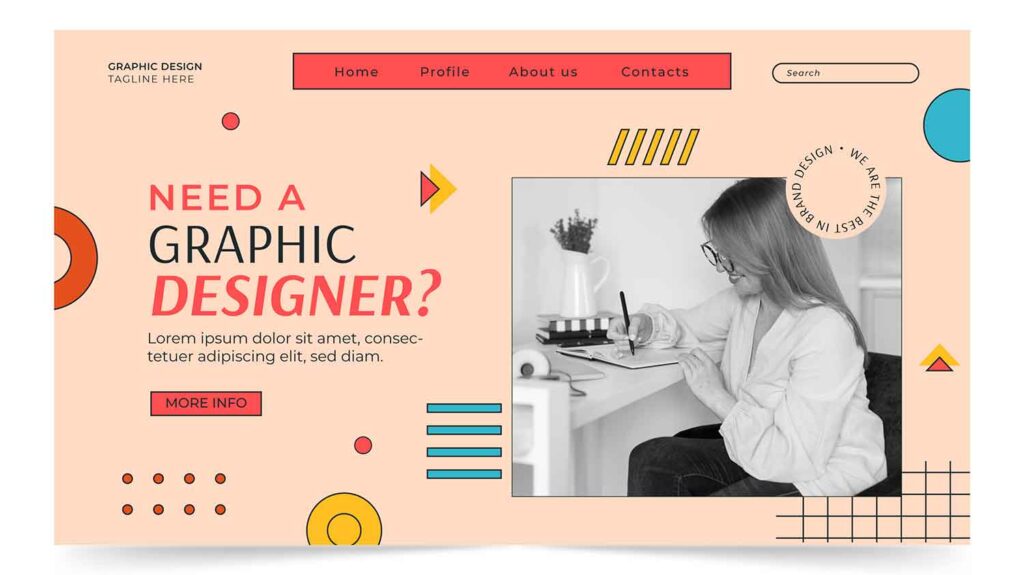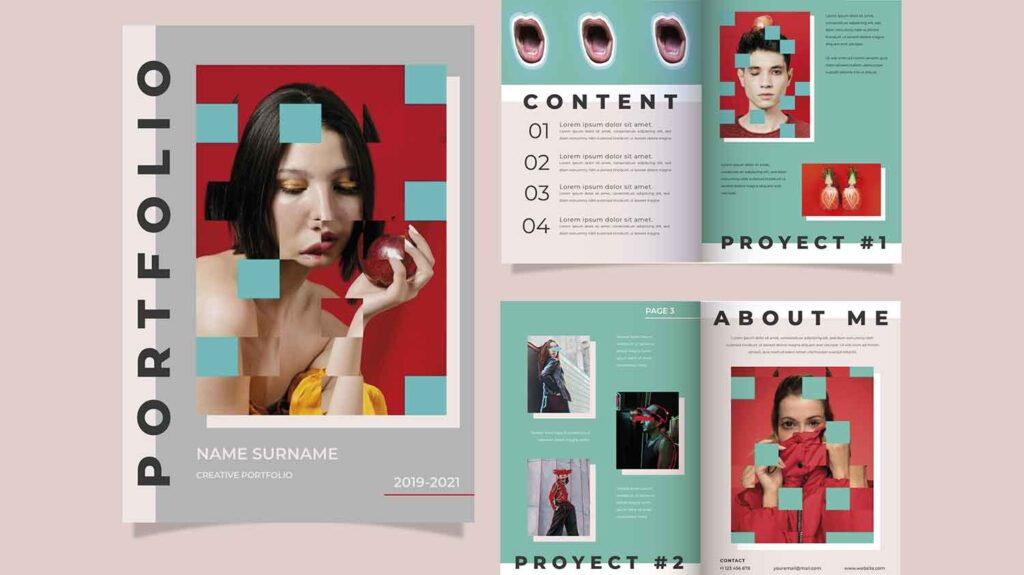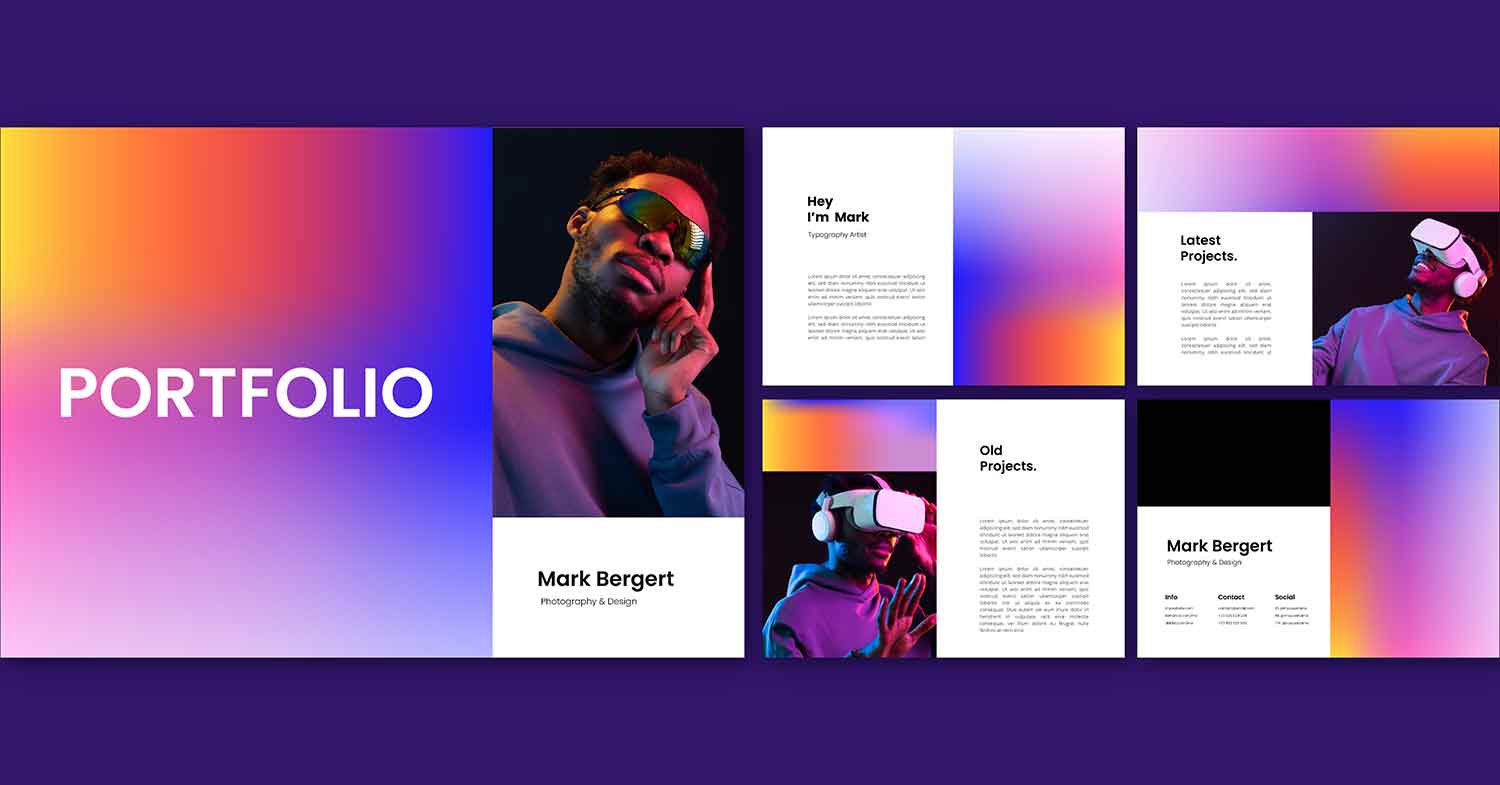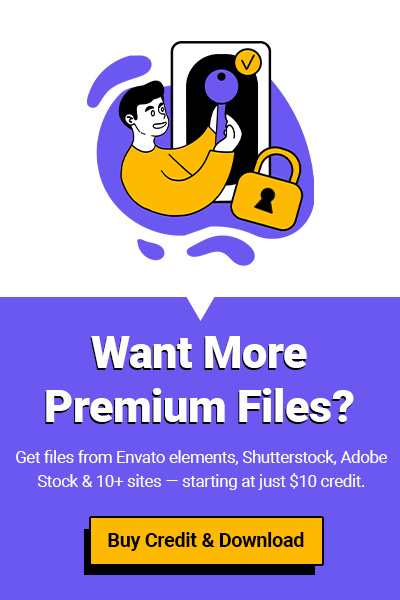If you’re just starting out as a designer, one of the most important things you’ll ever create is your graphic design portfolio. Whether you’re applying for freelance work, a full-time job, or just trying to attract clients online, your portfolio is what speaks for you before you even get into the room.
But if you’re wondering how to create a graphic design portfolio, especially as a beginner, don’t worry — this guide breaks down everything you need: from the right projects to include, to design tips, to where and how to showcase your work.

Why a Graphic Design Portfolio Matters
A portfolio isn’t just a folder of images — it’s your personal brand in action. It shows:
- Your design style and creativity
- The tools you’re skilled at (Photoshop, Illustrator, After Effects, Figma, etc.)
- How you solve problems for clients
- Your ability to take ideas from concept to final product
For clients and employers, your portfolio is often the deciding factor between you and another designer. That’s why building it carefully is so important.
Step 1: Choose Your Best Work
When you’re learning how to create a graphic design portfolio, the first step is curation. Don’t include every project you’ve ever made — only highlight your strongest, most polished pieces.
✅ Pick 8–12 projects that show variety (logos, social media graphics, posters, website UI, motion graphics, etc.).
✅ Show different industries if possible (e.g., a food brand logo, a music album cover, a business flyer).
✅ If you don’t have client work yet, create personal projects — redesign an existing brand, create concept ads, or develop passion projects.
Step 2: Tell the Story Behind Each Project
A common beginner mistake is just uploading the final design image. But the best portfolios show how you think as a designer. For each project, add:
- Brief/Challenge → What problem were you solving?
- Process/Concept → Sketches, mood boards, early drafts.
- Solution/Result → Final polished design with mockups.
This way, potential clients don’t just see a “pretty picture” — they see how you work.
Step 3: Design Your Portfolio Layout
Your portfolio itself should reflect your design sensibility. That means paying attention to:
- Clean layout: white space, consistent fonts, and alignment.
- Mockups: put your designs into real-world mockups (billboards, phones, packaging) to make them stand out.
- Navigation: if it’s online, make sure your portfolio is easy to browse on both desktop and mobile.
💡 Pro Tip: Many beginners use free portfolio builders like Behance, Dribbble, or Adobe Portfolio. If you want more control, you can build your own website with WordPress or Webflow.
Step 4: Include Different Project Types
To make your portfolio versatile, try to include different categories of design work:
- Logos & Branding → Show consistency and identity design.
- Social Media Graphics → Highlight trendy, engaging visuals.
- Print Design → Posters, brochures, business cards.
- UI/UX Projects → If you’re into web or app design, showcase Figma/Sketch projects.
- Motion Graphics/Video → Short animations, intros, or ads.
This shows you’re a well-rounded designer, not limited to one niche.
Step 5: Write a Short Bio & Contact Section
Your portfolio should include a little about you:
- Who you are
- Your design philosophy/style
- Tools you use (Photoshop, Illustrator, After Effects, etc.)
- Contact info or a “Hire Me” button
Think of this as your personal brand pitch.
Step 6: Keep It Updated
A portfolio is never “finished.” As you grow and improve, keep replacing older work with better, more recent projects. This shows clients that you’re evolving with trends and tools.
Common Mistakes to Avoid
- Too many projects → Quality over quantity.
- No context → Always explain the project, don’t just show pictures.
- Messy design → Remember, the portfolio itself is also part of the design test.
- Outdated work → Remove work that no longer represents your current skill level.
Bonus: Tips for Beginners with No Client Work
If you’re fresh out of school or just self-teaching design, you might not have client work yet. That’s okay! You can still build a great portfolio:
- Create fictional brand projects → design a logo and branding for an imaginary coffee shop or tech startup.
- Re-design existing ads, posters, or websites → show how you’d make them better.
- Offer to do small projects for friends or local businesses for free/cheap to build up real-world examples.

Where to Showcase Your Portfolio
Once your portfolio is ready, you need to put it out there:
- Behance – great for visibility and networking.
- Dribbble – good for UI/UX and quick shots.
- LinkedIn – helps you connect with clients and recruiters.
- Personal Website – the most professional option for long-term branding.
Why Designers Use FileClub
Creating a design portfolio takes a lot of resources: mockups, stock images, fonts, icons, and templates. Instead of buying multiple subscriptions, FileClub lets you download premium assets from 12+ platforms (like Freepik, Envato, Adobe Stock, Shutterstock, and more) at a fraction of the cost.
🎨 Need a PSD mockup to present your logo?
🎬 Looking for a video template for your motion graphics project?
📷 Searching for high-quality stock photos for your portfolio design?
With FileClub, you can grab what you need on demand — paying only for the files you download. It’s the easiest way to power up your design portfolio without overspending.
👉 Explore FileClub today and start building your best portfolio.


